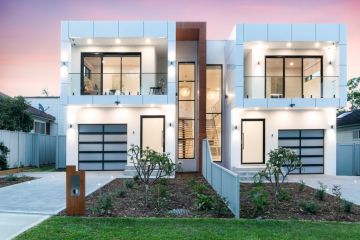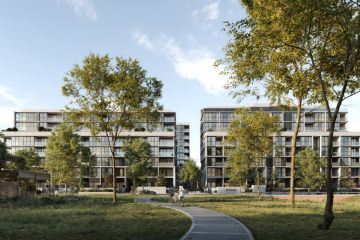Architect Kerstin Thompson on how to redesign your home – and life

It’s a common indulgence to pore over houses in glossy magazines. But what do they offer other than pure escapism?
It’s a pertinent question at a time when housing affordability has reached crisis point, and there’s a push for urban consolidation.
On July 31 speakers at the inaugural Housing Futures Forum in Melbourne will speculate on the future of the family home, apartments and housing for the aged, students and multiple generations.
The principal of KTA, leading Melbourne architect Kerstin Thompson, is well placed to discuss what lessons, if any, the bespoke house offers the future of housing. She’s won numerous architecture awards for her beautiful house designs, including last year’s Robin Boyd Award for House at Hanging Rock.
Despite the accolades, Thompson is more interested in what houses do, than their appearance. She’d like to shift the public’s obsession with house style to the more intriguing question of how houses influence relationships within a household, with neighbours and the wider community.
She wants people to think about how the layout of a house affects the way adults relate to children, children to siblings, and household members to guests.
In KTA’s Blairgowrie house, for instance, the children’s bedrooms are internally connected to encourage them the kids to play together. There is no internal corridor and each bedroom has its own door to the garden outside. This allows the children to lock the internal door and maintain their privacy and have separate access when they need it. It also means that what works well for smaller children – linked bedrooms – can be adapted to work in a different way to suit say, teenagers.
Thompson would also like people to consider the impact of a bathroom attached to each bedroom at a time when consumers are demanding more and more bathrooms. “What that does is separate people from each other,” she says. “The old squabbles about who gets to use the bathroom first, who owns the toothbrush – those kinds of interaction are removed.”
The way a house is planned and organised, she says, has consequences in the ways household members relate to each other. “I think that’s really interesting and important to remember.”
The internal dynamics of a house are one thing. But how can a house influence relationships with neighbours and the broader community?
Walking around the inner city, it’s a pleasure to glance into windows and get a sense of the life within, Thompson says. In the past, Victorian terraces offered vibrancy to the street as many had a living room at the front. One could get a sense of the life within houses by walking down the street.
But now, many houses have a front bedroom, and living areas are pushed to the back to bring people closer to rear courtyards and gardens. Unfortunately that trend has deadened our streets, she says, making them less safe and enjoyable places to be.
In her practice, Thompson is mindful of how houses foster relationships with neighbours and neighbourhood – a fine example being Melbourne Bayside’s Upside-Down House, where the living area is at the front of the upper level and has an appealing visual connection with the street below.
“It comes down to how much you want to set up a neighbourly network. A lot of people talk about community but it when it comes to the crunch, actually design their houses to block out communication with neighbours.”
Regulations can also hinder community connection. “There are a lot of regulations which preclude those nice connections with neighbours. We have become really obsessed with overlooking; we’ve become obsessed with acoustics. On the one hand we want to be connected, we long for community, on the other hand we don’t really want to practice in a way that enables that feeling of connection,” she observes.
“While on the one hand an individual house is generally a client’s wish list for themselves, each house adds up to a street, adds up to a neighbourhood, adds up to a city. So every piece in that puzzle has a consequence.”
Kerstin Thompson is keynote speaker at Design Speaks: Housing Futures in Melbourne on July 31.
We recommend
We thought you might like
States
Capital Cities
Capital Cities - Rentals
Popular Areas
Allhomes
More







